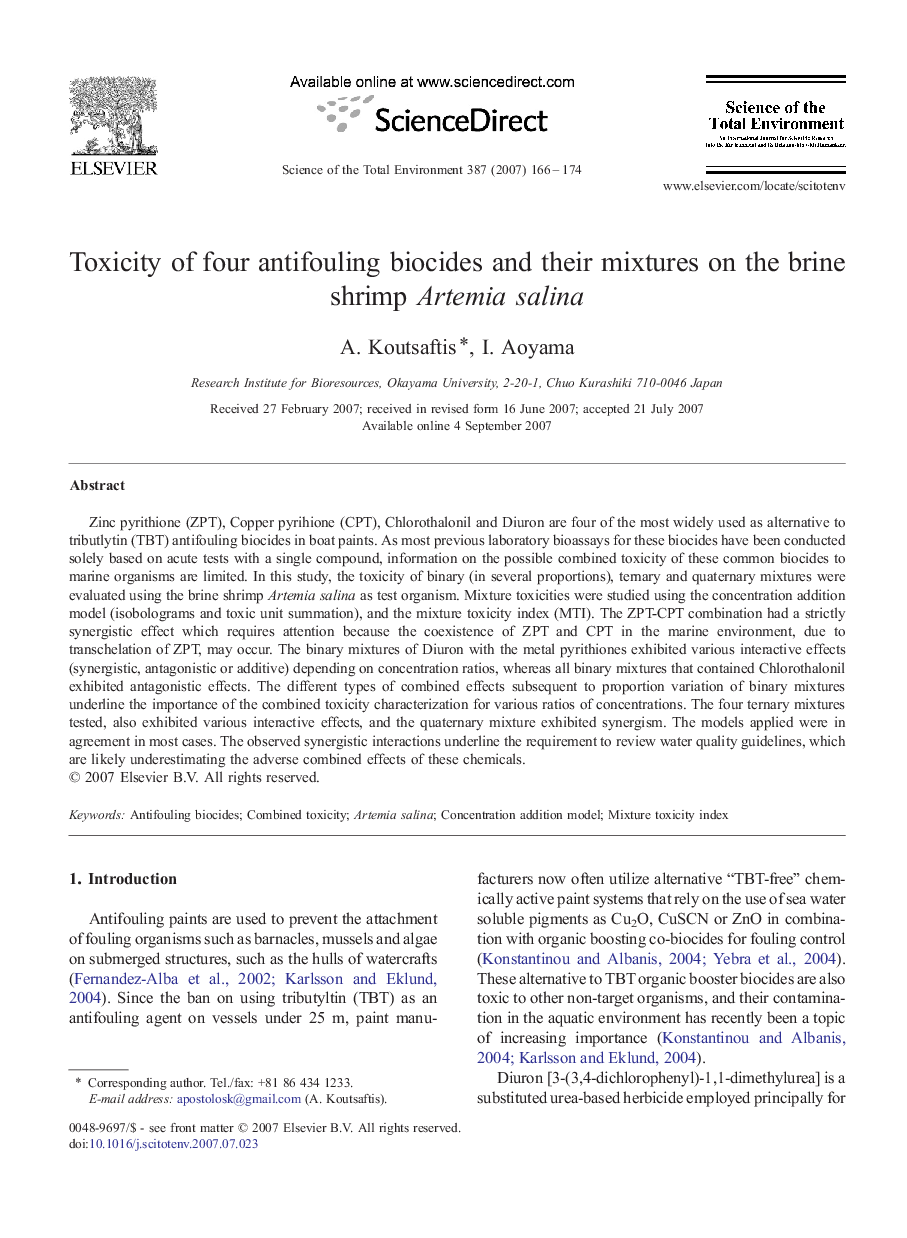| Article ID | Journal | Published Year | Pages | File Type |
|---|---|---|---|---|
| 4432761 | Science of The Total Environment | 2007 | 9 Pages |
Zinc pyrithione (ZPT), Copper pyrihione (CPT), Chlorothalonil and Diuron are four of the most widely used as alternative to tributlytin (TBT) antifouling biocides in boat paints. As most previous laboratory bioassays for these biocides have been conducted solely based on acute tests with a single compound, information on the possible combined toxicity of these common biocides to marine organisms are limited. In this study, the toxicity of binary (in several proportions), ternary and quaternary mixtures were evaluated using the brine shrimp Artemia salina as test organism. Mixture toxicities were studied using the concentration addition model (isobolograms and toxic unit summation), and the mixture toxicity index (MTI). The ZPT-CPT combination had a strictly synergistic effect which requires attention because the coexistence of ZPT and CPT in the marine environment, due to transchelation of ZPT, may occur. The binary mixtures of Diuron with the metal pyrithiones exhibited various interactive effects (synergistic, antagonistic or additive) depending on concentration ratios, whereas all binary mixtures that contained Chlorothalonil exhibited antagonistic effects. The different types of combined effects subsequent to proportion variation of binary mixtures underline the importance of the combined toxicity characterization for various ratios of concentrations. The four ternary mixtures tested, also exhibited various interactive effects, and the quaternary mixture exhibited synergism. The models applied were in agreement in most cases. The observed synergistic interactions underline the requirement to review water quality guidelines, which are likely underestimating the adverse combined effects of these chemicals.
